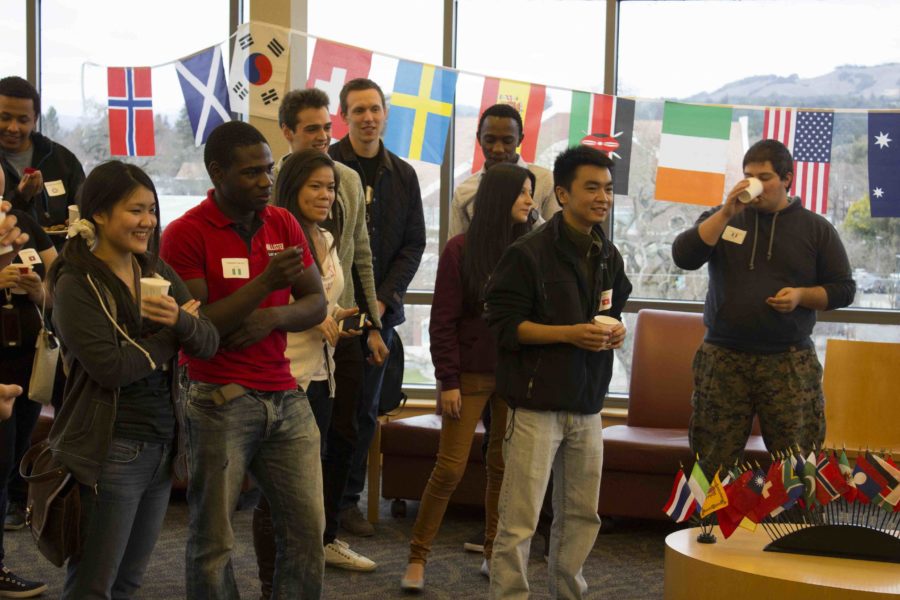Percy Dlamini is deaf, South African and adamant about not wasting his money by failing his classes here at Santa Rosa Junior College after moving from the U.K.
Like many international students, studying in the United States is a serious matter Dlamini doesn’t take lightly. International students pay $245 per unit taken at SRJC, compared to resident students who pay $46 per unit. In addition to assimilating into a new culture, balancing priorities becomes another significant hurdle.
For Dlamini, his priorities are school and family. “I have kids so I don’t go out as much,” Dlamini said in an email interview. “I don’t have many friends.”
Though Dlamini says he’s friendly, he is more focused on his family and academic life more than anything else. “We pay too much to waste time failing. We strive for good grades to secure scholarships,” Dlamini said.
Though friendly and determined academically, international students like Dlamini are observant of the differences in American cultural norms.
“Independence is what stands out for me,” Dlamini said. “At home I have a videophone. No need to ask a friend to make a call for me. Free interpretation service. Full closed captions in everything on TV.”
When asked what he thought of the campus, SRJC exchange student David Mahlaku, also from South Africa, said everyone was welcoming and helpful.
The differences in how the students view American life are vast. Depending on the country of origin, what they see as “freedom” or “welcoming” vary accordingly.
“You can find different styles of people completely mixed together, without any disgust and discrimination. The other thing is that I am really moved by American’s humanistic concern,” said Chinese SRJC student XiaoXiao He, also in an email interview. Though most of the observations are positive, the students still struggle with some aspects of American culture like sarcasm.
“I always couldn’t catch the funny point when the teacher tried to make a joke in the class,” he said.
For Japanese student Ayami Ikeda, American academic life presents itself as an opportunity and challenge. “In my country in Japan, we need to try hard to get in college or university we want and it is not hard to graduate. But here in America, it is very different. Especially because I am trying to transfer, I need to attend every class and pay very close attention. I think it is better that way in America, but it is very hard to keep that way.”
She also couldn’t pinpoint what is singularly an aspect of American culture in regards to what she’s observed so far during her stay here. “I am not sure what is American because I see a lot of diverse cultures. I lived with two host families but their life style was totally different. America accepts different cultures into their culture so it is hard for me to tell what is American. But I think it is very cool to see different cultures in my usual life,” Ikeda said. Ikeda particularly enjoys the fact that she has made connections with people and can do anything she wants without any form of judgment.
In her case social support and connection made the assimilation easier and enjoyable. For Dlamini, the community involvement SRJC has was also an eye opener. “Dude, let me tell you something that’s fascinating, the involvement of college with communities. Doing community projects as part of curriculum. This one big thing excites me and makes me appreciate community college. I know I don’t participate into much because of communication barriers as a deaf student, but I go to Redwood Food bank myself or with my class sometime and it’s awesome.”
“Where I come from, education institutions focus of studying on campus that’s it,” Dlamini added.
Whether it’s noticing a cultural smorgasbord or participating in the community, studying at SRJC offers international students an opportunity and challenge, which they seem to like.
“There is no ‘normal’ here,” Ikeda said.


